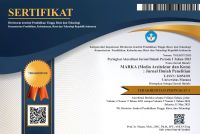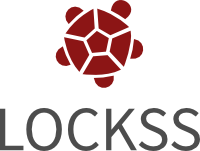Identifikasi Penerapan Desain Universal pada M Bloc Space di Jakarta
Abstract
The revitalization of the Perum Peruri area in Jakarta has changed its image from a relatively closed industrial area completed with its own employee residence into an open creative space designated especially for the millennials. The adaptive-reuse concept was used to prioritize the preservation and conservation of a state-owned heritage asset. The objective of this study is to identify the implementation of universal design guidelines by means of matching the outcome of the revitalization towards the government of the Republic of Indonesia regulation inscribed in Permen PUPR no. 14/PRT/M/2017. This study employs two approaches, a qualitative approach which descriptively matches the revitalization of M Bloc Space towards the regulation mentioned and a quantitative approach by means of distributing questionnaires to gain insights into the users’ perception of the implementation of universal design principles at M Bloc Space. The study shows that there are limitations to universal design implementation due to the design restriction as regulated in the heritage building regulation. It is important to stress that this study does not emphasize on the heritage part of the M Bloc Space development, rather its adaptation toward the needs of many of its users.
Downloads
References
Ergenoglu, A. (2015). Universal Design Teaching in Architectural Education. Procedia - Social and Behavioral Sciences, 1397-1403.
Kementerian Pekerjaan Umum dan Perumahan Rakyat. (2017). Permen PUPR No. 14/PRT/M/2017 tentang Kemudahan dalam Bangunan Gedung. Jakarta: Pemerintah Republik Indonesia.
Masruroh, F., Mauliani, L., & Anisa. (2015). Kajian Prinsip Universal Design yang Mengakomodasi Aksesibilitas Difabel: Studi Kasus Taman Menteng. Seminar Nasional Sains dan Teknologi (pp. 1-11). Jakarta: Fakultas Teknik Universitas Muhammadiyah Jakarta.
Misirlisoy, D., & Gunce, K. (2016). Adaptive Reuse Strategies for Heritage Buildings: A Holistic Approach. Sustainable Cities and Society, 91-98.
Othman, A. A., & Elsaay, H. (2018). Adaptive Reuse: An Innovative Approach for Generating Sustainable Values for Historic Buildings in Developing Countries. Organization, Technology and Management in Construction, 1-15.
Pemerintah Republik Indonesia. (2020). Undang-undang No. 11 Tahun 2020 tentang Cagar Budaya.
Percetakan Uang Republik Indonesia. (2015). Buku Ensiklopedia Online. Retrieved October 27, 2022, from Percetakan Uang Republik Indonesia: https://p2k.utn.ac.id/ind/2-3069-2966/Perum-Peruri-Perusahaan-Umum-Percetakan-Uang-Republik_38733_utn_p2k-utn.html#Sejarah
Preiser, W. F., & Smith, K. H. (2011). Universal Design Handbook 2nd Edition. New York: McGraw-Hill Company.
Sejarah PERURI. (2017). Retrieved October 28, 2022, from PERURI: https://www.peruri.co.id/tentang-kami/sejarah-singkat
Soedarsono, W., et.al. (2021). Placemaking in the Digital Era: A Case Study of M Bloc Space - Jakarta. Artepolis (pp. 160-171). Bandung: Atlantis Press.
Surarjo, J. G. (2021, Mei 16). Wawancara tentang Konsep Adaptive-Reuse pada M Bloc Space. (A. H. Rahardjo, Interviewer)
The Building and Construction Authority of Singapore (BCA). (2022). Guide to Universal Design Index. Singapore: The Government of Singapore.
Widayat, R. (2008). Spirit dari Rumah Gaya Jengki: Ulasan tentang Bentuk Estetika dan Makna. Dimensi Interior, 80-89.
- Abstract 2
- PDF (BAHASA INDONESIA) 1
Copyright (c) 2024 Astrid Hapsari Rahardjo, Andi Nasri Hamzah, Annas Maulid

This work is licensed under a Creative Commons Attribution-ShareAlike 4.0 International License.




















